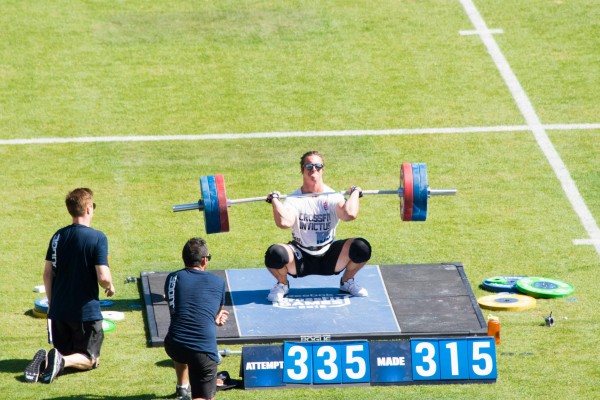
Wait A Second…Or Two.
Written by C.J. Martin
One of the best things I learned at my CrossFit Level 1 seminar more than 8 years ago was the concept of Mechanics –> Consistency –> Intensity. Proper movement mechanics must be the foundation of any successful fitness program. Without good movement patterns the likelihood of reaching performance plateaus is exponentially increased – both due to the inefficiency of the movement pattern itself, and more often than not, injury. The second step in that concept is consistency; simply put, it’s not good enough to have good mechanics some of the time, but rather you should strive for good mechanics all the time. Once, and only once an athlete is demonstrating consistently good movement mechanics should the focus progress to intensity.
Simple enough concept, right? The problem is, understanding the concept is not enough…we have to apply it. So how then can we help reinforce good movement patterns when most athletes want to rush into higher intensity? My suggestion is that you ask them to wait a second…or two.
Isometric pauses are one of my favorite tools for teaching proper movement mechanics. Isometric pauses allow athletes to feel proper positions, and allow coaches to communicate corrections as the athlete feels the faulty pattern. The isometric pause also has the added benefit of helping to control intensity – slowing athletes down and forcing them to lighten the load so that they can meet the prescribed tempo.
Utilizing isometric pauses is simple, and can be applied to nearly any movement and in a variety of ways. To keep things simple though, consider adding an isometric pause at the point of mechanical breakdown. Here are a few examples of how you might utilize an isometric pause in your coaching and training….
Squat – Fixing Depth Issues
An isometric pause is extremely effective in helping athletes learn proper depth and positioning in a squat – back, front, overhead, or any other variety. Athletes who are unfamiliar or uncomfortable in the bottom position of the squat need to spend some time there. My suggestion is to take the athlete to their safe and stable bottom position, and ask them to pause there for 2-3 seconds before ascending. If the athlete is capable of safely descending lower, cue the athlete to slowly descend until you say stop (or until the athlete cannot safely go lower) and then pause for 2-3 seconds. While they’re paused, communicate any coaching cues to help improve their position, and ask them to recognize how that position feels.
Snatch – Hips Rising Too Early
If the hips rise too early in the first pull (separating the barbell from the ground), consider prescribing a 2-3 second pause with the plates 2” off the ground – this will force the athlete to distribute weight properly and keep their torso angle as they separate the barbell from the ground. The pause also gives the coach time to make any needed corrections – including tactile cues, and allows the athlete to feel the proper position so that they can recreate it.
Power Clean – The Ugly Jumping Jack Footwork
The footwork and landing position for a full clean and a power clean should be identical, but for many athletes that is not the case. Many athletes have a tendency to widen their feet when receiving a power clean – or what is embarrassingly referred to as a “jumping jack clean.” To help correct this issue, you may consider prescribing an isometric pause at the receiving position. Ask the athlete to clean, and pause for two seconds in receiving. In bad cases, it will be readily apparent to the athlete that their feet are too wide, and after the two second pause you will ask the athlete to reset their feet to a proper squatting position, and then perform a front squat. For more subtle cases, you can ask the athlete to descend into the front squat immediately following the two-second pause. This will give the athlete a chance to feel whether that is truly a comfortable position, or if they need to continue to refine their footwork.
Don’t stop coaching when the athlete has successfully performed the isometric pause once. In order to make an improved movement pattern permanent, you need repetition. Don’t be afraid to ask the athlete to continue with a tempo prescription that includes an isometric pause for at least the remainder of the workout. Yes, it may slow them down and force them to lighten the load a bit, but remember….Mechanics –> Consistency –> Intensity. They may not love slowing down at the time, but they’ll thank you when they’ve corrected the faulty movement and busted through a performance plateau.